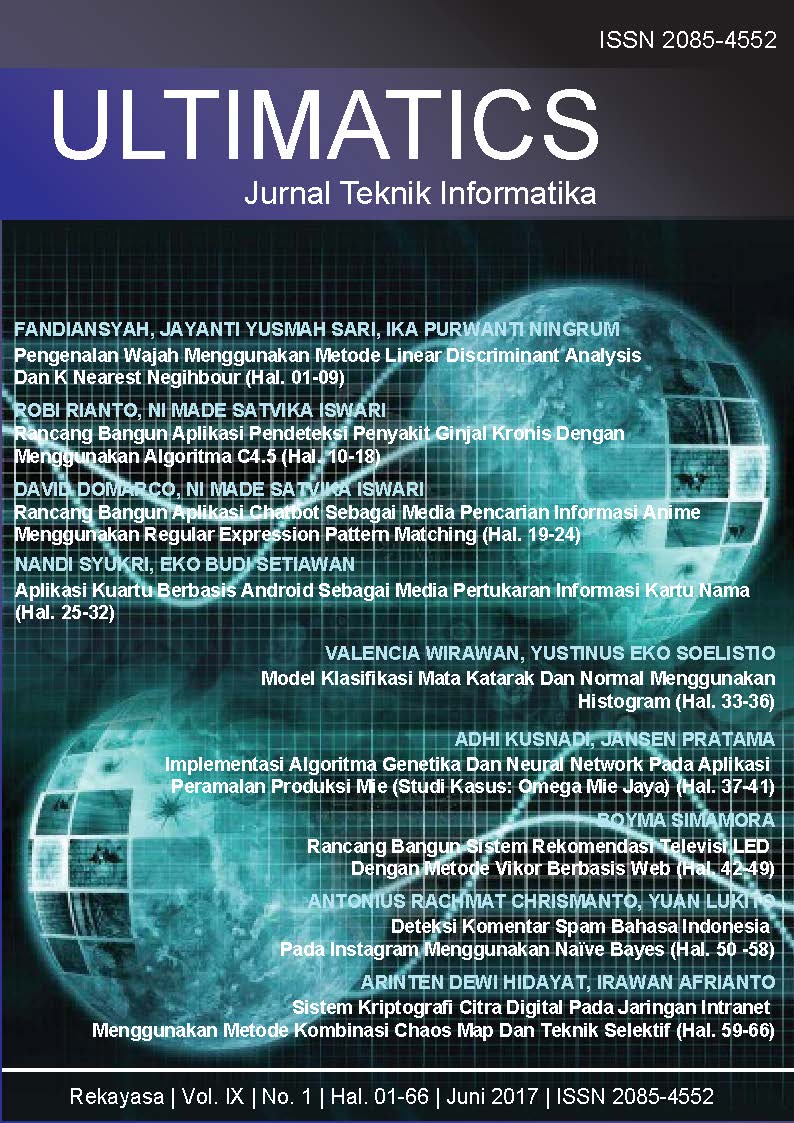Rancang Bangun Aplikasi Pendeteksi Penyakit Ginjal Kronis dengan Menggunakan Algoritma C4.5
DOI:
https://doi.org/10.31937/ti.v9i1.558Abstract
Kidneys are two bean-shaped organs, each about the size of a fist. They are located just below the rib cage, one on each side of the spine. Kidneys are vital organs contained in the human body and serve to filter the blood of metabolic waste product and throw it in the form of urine. Given the changing conditions in the body can affect the kidneys, causing a decrease in the function of these organ and lead to chronic kidney disease. In an article on the website of the National Institute of Diabetes and Digestive and Kidney Diseases (2014) argued that chronic kidney disease is a silent disease, in which patients appear normal and show no symptomp but the test results stating the patient's kidney function had decreased. Based on the above information, the research on how to detect chronic kidney disease will be conducted. Applications built on the basis of desktop and using Decision Tree algorithm C4.5. The trial was conducted to determine how much the level of accuracy that can be generated by the application. The testing process is done by using cross-validation and based on the results already calculated this application has an accuracy of 91.50% at the time of the decision tree is made without using preprocess menu.
Index Terms” C4.5, chronic kidney disease, decision tree, detection system.
Downloads
Downloads
Published
How to Cite
Issue
Section
License
Authors retain copyright and grant the journal right of first publication with the work simultaneously licensed under a Creative Commons Attribution-ShareAlike International License (CC-BY-SA 4.0) that allows others to share the work with an acknowledgement of the work's authorship and initial publication in this journal.
Authors are able to enter into separate, additional contractual arrangements for the non-exclusive distribution of the journal's published version of the work (e.g., post it to an institutional repository or publish it in a book), with an acknowledgement of its initial publication in this journal.
Copyright without Restrictions
The journal allows the author(s) to hold the copyright without restrictions and will retain publishing rights without restrictions.
The submitted papers are assumed to contain no proprietary material unprotected by patent or patent application; responsibility for technical content and for protection of proprietary material rests solely with the author(s) and their organizations and is not the responsibility of the ULTIMATICS or its Editorial Staff. The main (first/corresponding) author is responsible for ensuring that the article has been seen and approved by all the other authors. It is the responsibility of the author to obtain all necessary copyright release permissions for the use of any copyrighted materials in the manuscript prior to the submission.















